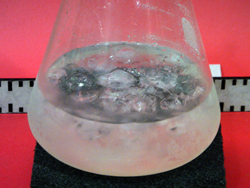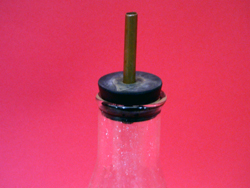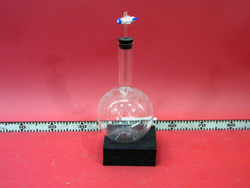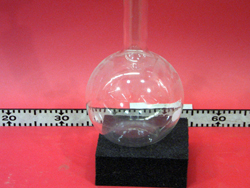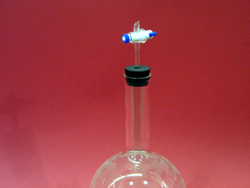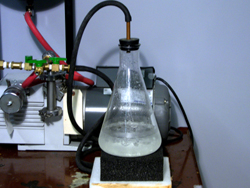Triple Point of Water, 4C50.40
Topic and Concept:
Change of State, 4C50. Critical Point
Location:
Cabinet: Thermodynamics (TD)
Bay: (A5)
Shelf: #2
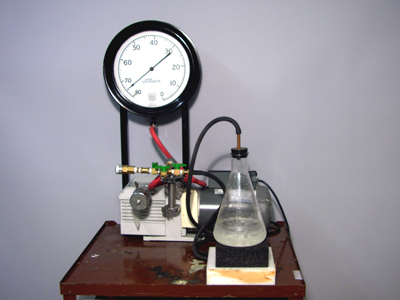
Abstract:
A sealed Erlenmeyer flask filled with ice water has the air pumped out of it creating a partial vacuum. Thus brings the mixture to the triple point of water whereupon the mixture boils showing solid, liquid, and gas existing at the same pressure and temperature.
Equipment |
Location |
ID Number |
|
|
|
Erlenmeyer Flask with Holed Stopper |
|
|
|
||
Ice |
Lecture demo Freezer or 4rd floor ice chess room4329 |
|
Important Setup Notes:
Ice is needed of this demonstration, witch may require extra setup time.
Setup and Procedure:
Pull out and plug in the Vacuum Pump cart. See Vacuum Pump page for operational instructions.
- Add about an inch worth of ice to either flask.
- Add just enough water to the flask to cover the ice.
- Firmly push on the stopper with the vent tube to seal the flask.
- Place the vacuum hose onto the vent tube.
- Turn on the vacuum pump.
Cautions, Warnings, or Safety Concerns:
- N/A
Discussion:

Matter exists in different phases depending upon its pressure and temperature. The specifics depend on which substance we're considering. The combinations of temperature and pressure that lead to a given phase of matter can be summarized in a phase diagram. Such a diagram for water is shown above. There exists one particular combination of temperature and pressure that allows water to exist as a solid, liquid, and gas simultaneously. This is called the triple point and for water this pressure and temperature are 612 Pa and 0°C. Adding ice to the water brings the ice water mixture into a dual phase state at 0°C. Using the vacuum pump, we pump out air from the flask which causes the internal pressure to drop. Upon reaching a pressure of 612 Pa, we see the ice water boil.
|
|
|
|
|
|
|
Videos:
References:

